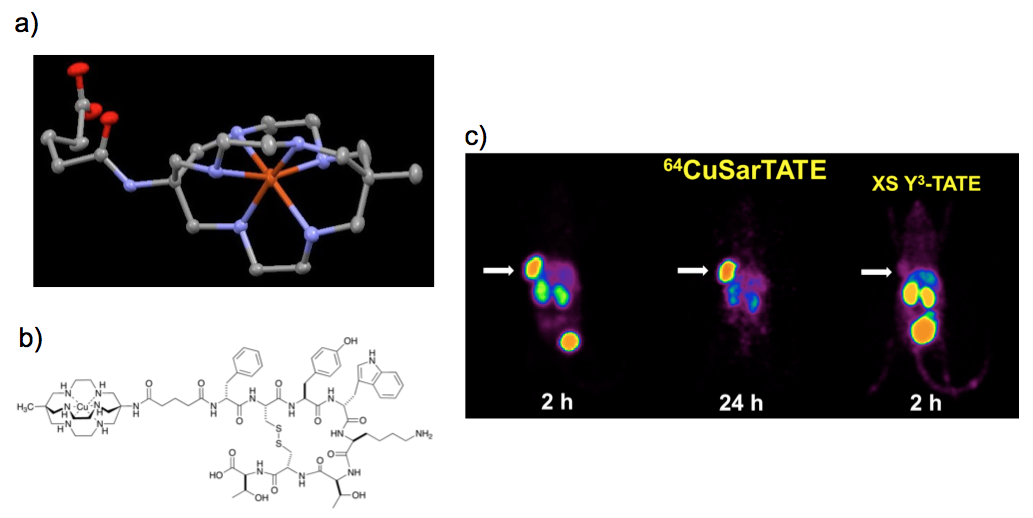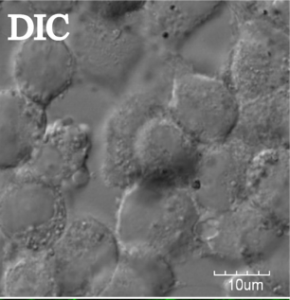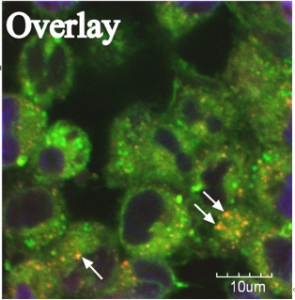Radiopharmaceuticals and Imaging Agents
a) Copper Radiopharmaceuticals
Copper has several isotopes that are of clinical interest for both imaging and therapy. For both imaging and therapeutic applications it is essential that the radionuclide be delivered selectively to the target site in the body. For metal isotopes such as copper and this can be achieved by the formation of very stable coordination complexes and attaching biologically active molecules to the complex that can provide selectivity for disease tissue (Figure 1).

Figure 1. a) A representation of the cation present in [Cu(MeCOSar)]2+ as determined by X-ray crystallography. b) The chemical structure of [Cu[SarTate)]. A copper complex tethered to an octapeptide that selectively binds to somatostatin receptors that are over-expressed on neuroendocrine tumours.
c) A PET image of [Cu(SarTate)] in mouse model with a tumour that over-expresses somatostatin receptors (A427#).
b) Technetium and Rhenium Radiopharmaceuticals
Technetium-99m is the most commonly used radioisotope for diagnostic imaging. Rhenium has two isotopes, Re-186 and Re-188, which are beta emitters that can be used for radiotherapy. We are investigating new coordination complexes of technetium and rhenium as potential theransotic agents. A goal is to use the technetium complexes specifically designed to target diseased tissue for diagnostic imaging and the rhenium analogue for targeted radiotherapy.
c) Fluorescence Imaging
We are also interested in the synthesis of metal-based anti-cancer agents, their cell uptake and intracellular distribution. A microscope image of an ovarian cancer cell and the fluorescence image after the cell was treated with a fluorescent metal complex are shown in Figure 2. The fluorescence image shows that the complex is taken up within the cell and accumulates in vesicles in the cytosol.
Figure 2. HeLa cancer cells treated with a fluorescent hypoxia selective copper complex.
Collaborations: Jonathan Dilworth (University of Oxford), Alan Packard (Harvard), Phil Blower (King’s College, London), Helmut Maecke (Freiburg) Christoph Hagemeyer (Baker ICI, Melbourne), Rod Hicks, Peter Roselt, Carleen Cullinane (Peter MacCallum Cancer Cente, Melbourne).

